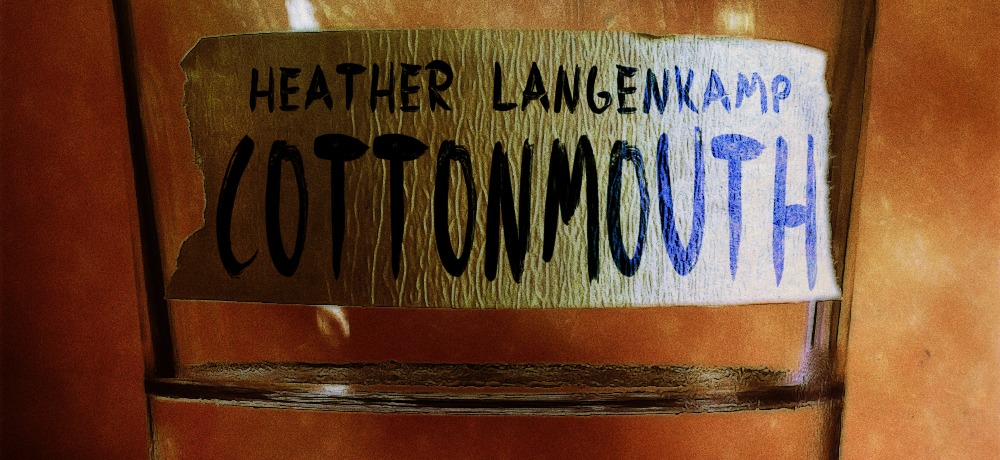


After recently checking out their short film Cottonmouth, I was excited to catch up with Danny Salemme and Zach Wincik about their collaborative efforts on their creepy and effective short. Cottonmouth stars genre legend Heather Langenkamp as a woman who has a sneaking suspicion that she’s not alone, so she sets out to prove that something is indeed lurking in her home every time she closes her eyes.
Read on to get the lowdown on Cottonmouth straight from Wincik and Salemme, and if you’d like to learn more about the short, head on over to https://www.cottonmouthfilm.com/ for more details. And while the short isn’t currently available online just yet, I’ve included the Cottonmouth trailer at the end of the Q&A, and I do highly recommend keeping an eye out for it whenever it goes live to the public.
Great job on the short. Can you discuss where the idea for Cottonmouth first came from?
We were looking for the most economic idea for a short to write, and we eventually landed on an idea that was rooted in a very irrational childhood fear that I [Danny] had. I always thought that if I had an open drink next to my bed, something might drink out of it while I was sleeping—like a mouse or a bug. So, for Cottonmouth, I just amplified that idea into something more literal and potentially threatening.
How challenging was it to set a tone and essentially tell a story here without using any dialogue at all?
The goal to tell a story without dialogue was very deliberate—and mostly had to do with budget restraints. That said, it ended up paying off because we could focus on and heighten other elements to support and strengthen the absence of any dialogue. We figured as long as we could create and maintain suspense and tension from start to finish, we’d be happy, and the familiar setting and simple story helped. Telling the audience where to look based on where we pointed the camera is a really fun way to speak to the audience without anyone having to actually speak to the audience.
You were able to work with the amazing Heather Langenkamp. Can you discuss bringing her on board and collaborating with her for Cottonmouth?
It was a dream come true to work with Heather. She’s an icon and truly the sweetest person we have ever worked with. Casting her for Cottonmouth was all about networking and essentially a case of “who you know.” Heather had done a day on Hellraiser: Judgment in Oklahoma and Zach had worked with many of that same crew, including casting director Chris Freihofer. Chris was casting director on Zach’s first short, Guessing Game, and so there was already a connection there. He was able to put us in touch with Heather and we were able to get her the script. Heather was an amazing collaborator on set and had lots of ideas about her character. She was extremely patient with us as young filmmakers and she was gracious enough to share some of her experience from decades in the genre.
I loved your creature in this (even though we only saw it briefly, it was still really creepy and fun). Were there any particular inspirations behind your creature design?
The inspiration behind the creature was all about climate change. In the world of Cottonmouth, climate change has put us past the point of no return, and we are seeing the effects of that. Creatures that were once living peacefully and secluded are now being displaced as humans continue to use up the earth’s resources. We wanted our creature in Cottonmouth to have somewhat of an amphibian vibe. It had lived on its own for centuries, staying hydrated away from human predators, and now it’s sick, scared, and drying up. We gave our special effects makeup artist, Erika O’Bar, a look-book and some backstory on the creature and let her go to work. She created the awesome makeup design and even fashioned a long tongue for the creature that unfortunately had to be scrapped for time limitations.
Are there any plans for turning Cottonmouth into a feature down the line?
The Cottonmouth short is actually a proof-of-concept for a feature script that we’re currently working on getting produced. In fact, the short is a slightly consolidated version of the feature script’s opening scene. A lot of the bigger ideas that we’re playing with in the feature—like the creature’s origins, for example—are hinted at in the short, and it became a challenge deciding what we should include and what we should just suggest in the short… if not completely omit. We originally had a scene where Heather’s character is watching a fake nature documentary where a voice actor we hired (who sounds exactly like David Attenborough) talks about the effects of climate change, but it felt too disjointed in the final edit. But as of now, the feature script is finished, and it’s about an estranged father and son piecing together who or what is killing people in their town during an unprecedented heatwave. Spoiler alert: it’s this creature.
What was your biggest takeaway from your experience working on Cottonmouth?
Our biggest takeaway from working on Cottonmouth was learning how to direct as a duo. Filmmaking is all about collaborating, but ultimately sharing final say as directors taught us how to really respect each other’s strengths (if something didn’t work or could be improved, we were open and fully transparent with each other, which ultimately paid off), while also being open to change and creative compromises. Directing Cottonmouth turned out to be a genuinely invaluable crash course in collaboration.